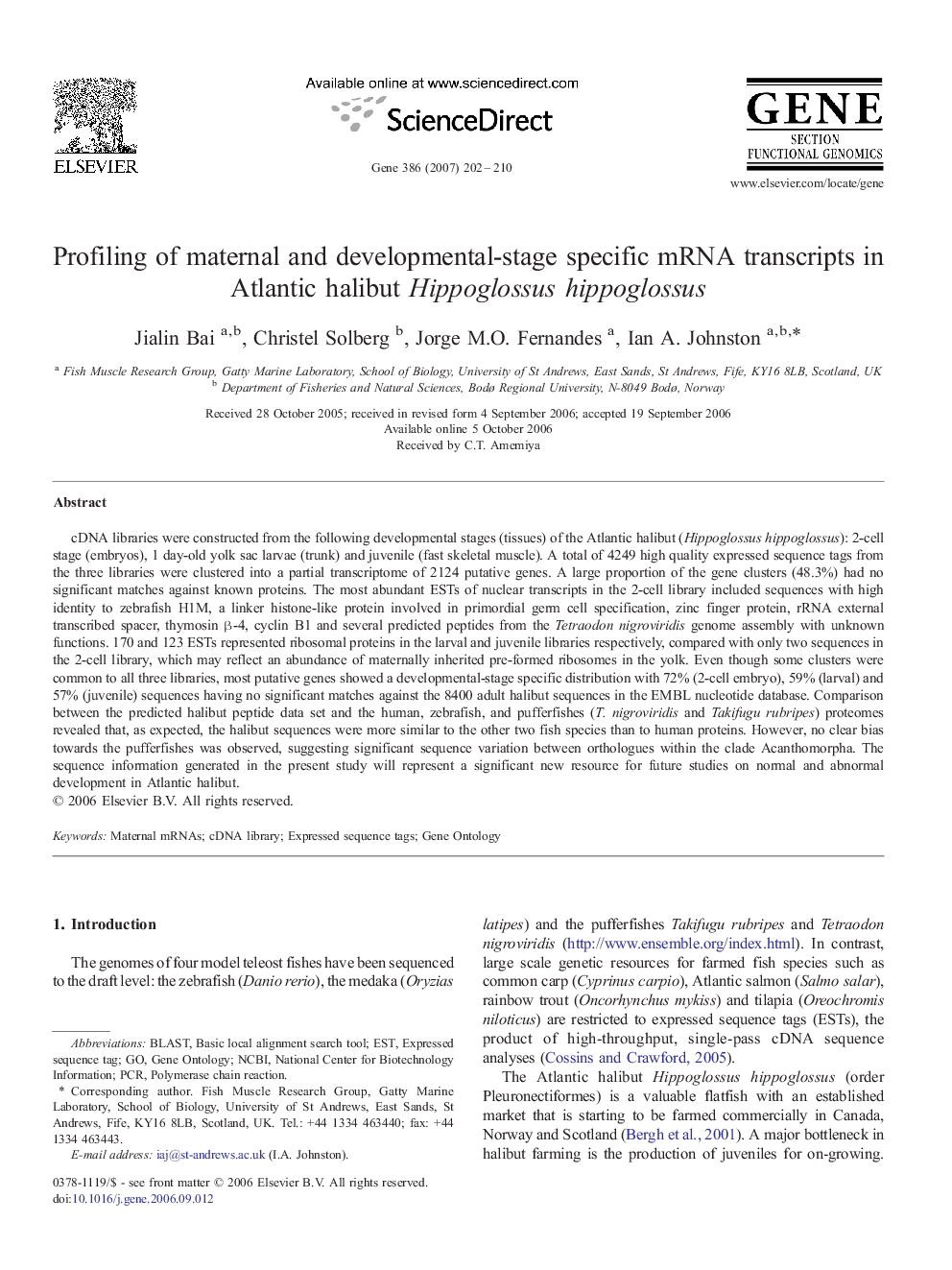| کد مقاله | کد نشریه | سال انتشار | مقاله انگلیسی | نسخه تمام متن |
|---|---|---|---|---|
| 2819951 | 1569941 | 2007 | 9 صفحه PDF | دانلود رایگان |

cDNA libraries were constructed from the following developmental stages (tissues) of the Atlantic halibut (Hippoglossus hippoglossus): 2-cell stage (embryos), 1 day-old yolk sac larvae (trunk) and juvenile (fast skeletal muscle). A total of 4249 high quality expressed sequence tags from the three libraries were clustered into a partial transcriptome of 2124 putative genes. A large proportion of the gene clusters (48.3%) had no significant matches against known proteins. The most abundant ESTs of nuclear transcripts in the 2-cell library included sequences with high identity to zebrafish H1M, a linker histone-like protein involved in primordial germ cell specification, zinc finger protein, rRNA external transcribed spacer, thymosin β-4, cyclin B1 and several predicted peptides from the Tetraodon nigroviridis genome assembly with unknown functions. 170 and 123 ESTs represented ribosomal proteins in the larval and juvenile libraries respectively, compared with only two sequences in the 2-cell library, which may reflect an abundance of maternally inherited pre-formed ribosomes in the yolk. Even though some clusters were common to all three libraries, most putative genes showed a developmental-stage specific distribution with 72% (2-cell embryo), 59% (larval) and 57% (juvenile) sequences having no significant matches against the 8400 adult halibut sequences in the EMBL nucleotide database. Comparison between the predicted halibut peptide data set and the human, zebrafish, and pufferfishes (T. nigroviridis and Takifugu rubripes) proteomes revealed that, as expected, the halibut sequences were more similar to the other two fish species than to human proteins. However, no clear bias towards the pufferfishes was observed, suggesting significant sequence variation between orthologues within the clade Acanthomorpha. The sequence information generated in the present study will represent a significant new resource for future studies on normal and abnormal development in Atlantic halibut.
Journal: Gene - Volume 386, Issues 1–2, 15 January 2007, Pages 202–210